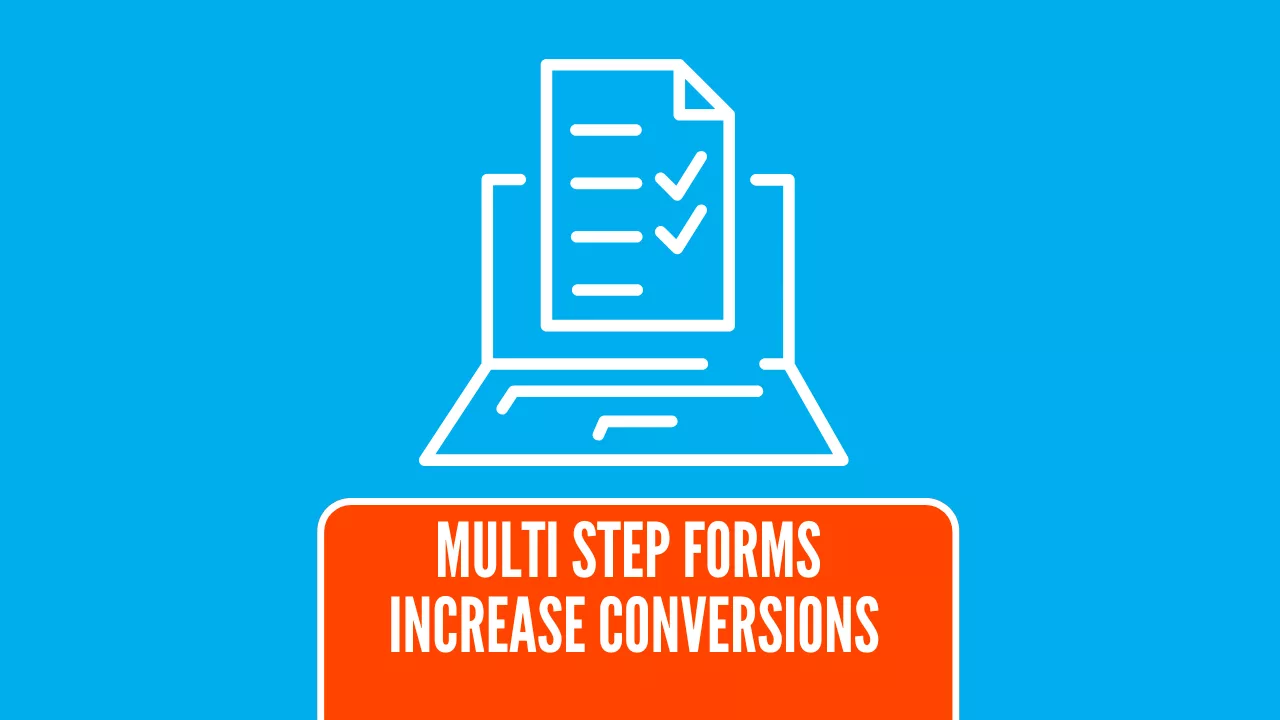Multi step lead forms break the data collection process into smaller steps, making it easier for users to complete. This method helps increase form completion rates and boosts conversions. In this article, we’ll explore their benefits, share top examples, and best practices.
Key Takeaways
Multi-step lead forms simplify the information collection process, improve user engagement, and significantly boost conversion rates by making form filling less overwhelming.
Key features like clear progress indicators, conditional logic, and mobile responsiveness are essential for effective multi-step forms, ensuring users have a pleasant experience and stay engaged.
Best practices such as keeping forms simple, using engaging copy, and providing immediate feedback are crucial for overcoming common challenges like form friction and user abandonment.
The Importance of Multi Step Lead Forms
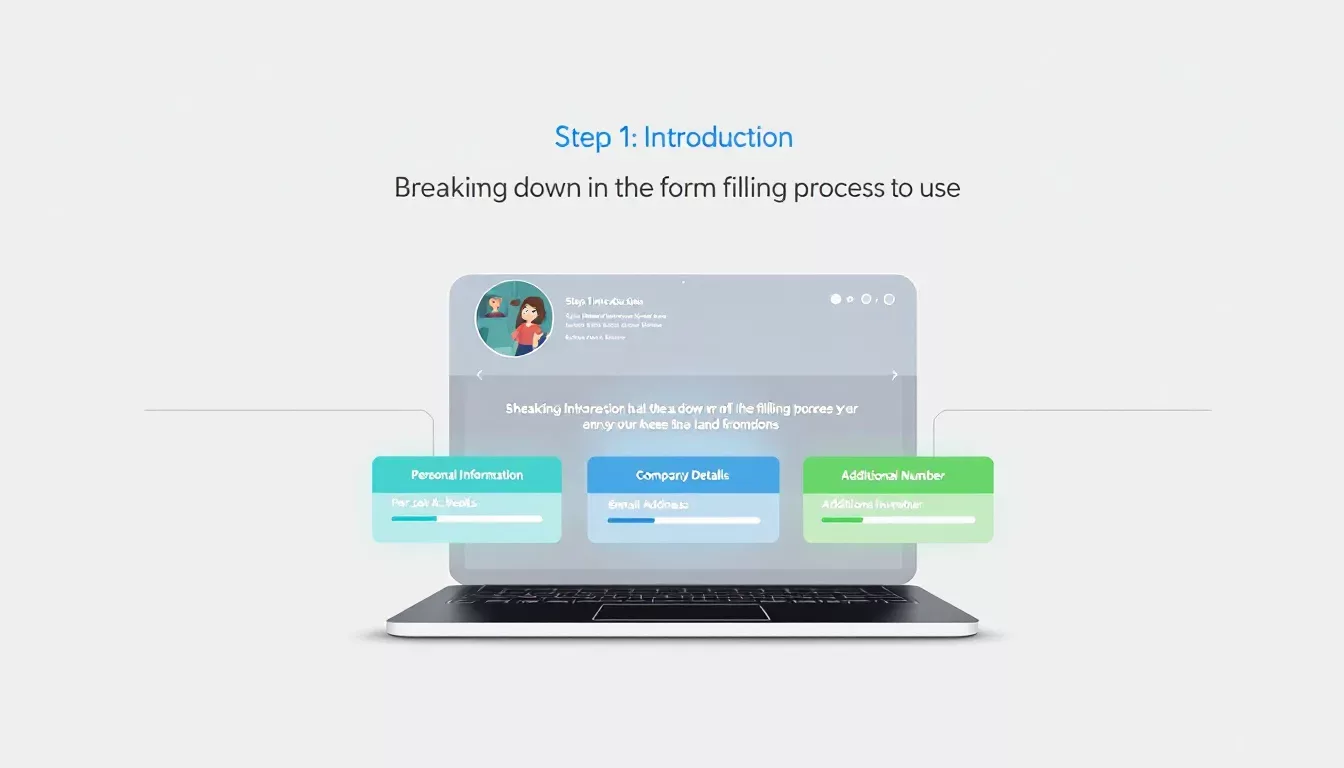
Multi-step forms have revolutionized the way we approach online forms and lead generation. Unlike single-step forms, which often capture only generic details and lack interactivity, multi-step forms segment the information collection process into more manageable parts, thereby simplifying the overall user experience. This segmentation is particularly beneficial as it reduces user overwhelm, making the process feel less daunting and more engaging.
The trend towards using multi-step forms in lead generation has gained momentum for a good reason. These forms enhance the user experience by breaking down complex questions into smaller, more digestible parts, leading to higher user satisfaction and ultimately, better conversion rates. Engaging users gradually with multi-step forms keeps their attention longer, significantly boosting the chances of form completion.
Both B2B and B2C businesses stand to gain immensely from incorporating multi-step forms into their lead generation strategies. These lead generation forms are designed to qualify leads more effectively by collecting detailed information in multiple steps, ensuring that the leads captured are more relevant and qualified leads. Without utilizing multi-step forms, businesses risk higher abandonment rates and missed opportunities to capture quality leads.
In essence, multi-step forms not only improve the user experience but also enhance the overall efficiency of the lead generation process. They allow businesses to engage users in a more interactive manner, leading to better data collection and higher conversion rates.
The importance of multi-step forms in today’s digital landscape cannot be overstated, as they represent a significant upgrade from the traditional, often cumbersome single-step forms.
Benefits of Using Multi Step Lead Forms
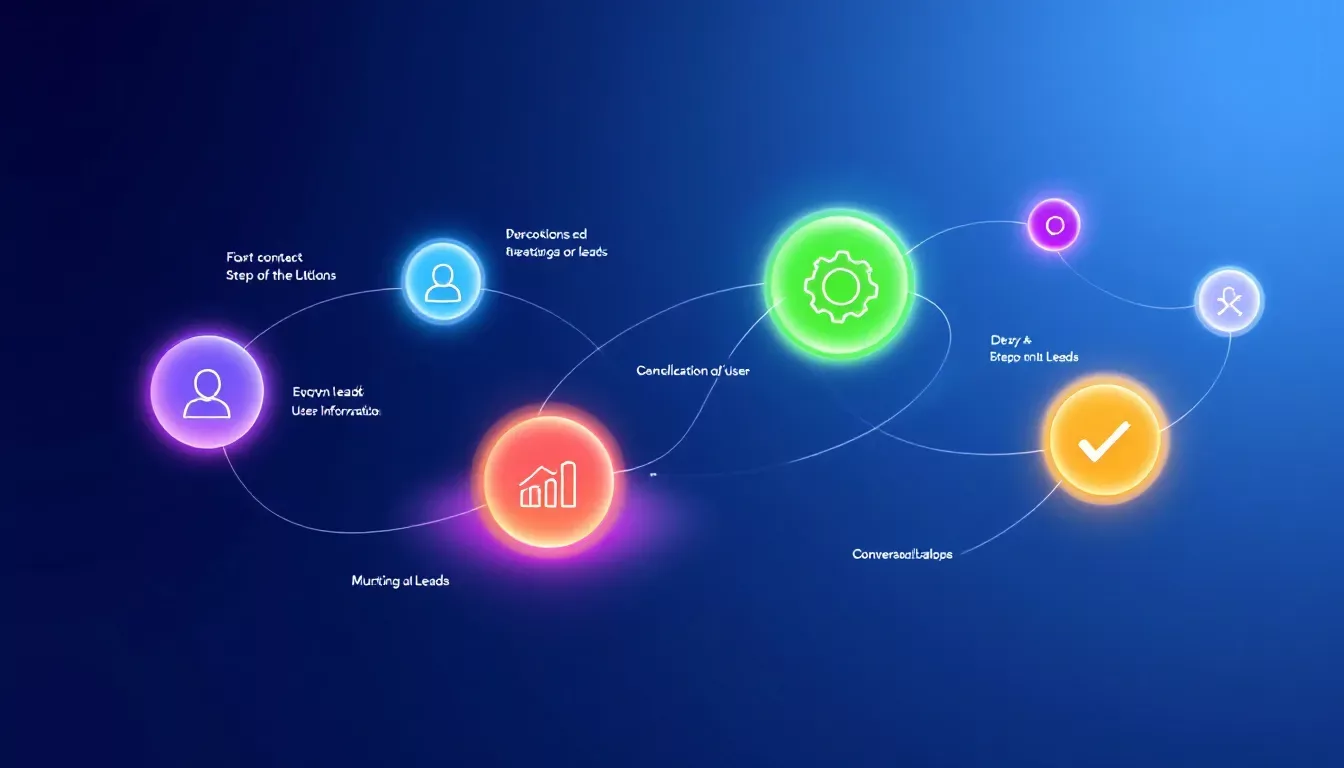
Multi-step lead forms offer benefits that go beyond merely breaking down the form filling process. These forms offer a systematic approach to gathering information, which leads to increased user engagement, improved data accuracy, and significantly higher conversion rates.
Let’s delve into these benefits in more detail.
Enhanced User Engagement
One of the primary benefits of multi-step lead forms is their ability to enhance user engagement. By breaking down the form into smaller, manageable parts, these forms create a more dynamic and engaging experience for users. This approach significantly reduces the likelihood of user abandonment due to cognitive overload, making the entire process less daunting.
HomeAdvisor provides an excellent multi-step form example by starting with a simple request for a zip code. This initial, easy step engages visitors right away and encourages them to proceed further. As users progress through the form, they remain engaged because the information is provided in digestible parts, which aids in information retention and overall user satisfaction.
The language used in multi-step forms also plays a crucial role in maintaining user engagement. Using compelling and direct copy resonates more effectively with the target audience, leading to higher completion rates. Simplifying the form filling process not only keeps users engaged but also enhances their overall experience.
Transforming an exhaustive list of queries into an engaging step-by-step discovery process can significantly improve user engagement. This method keeps the user’s attention focused and reduces the chances of form abandonment, which is crucial for capturing quality leads.
Improved Data Accuracy
Multi-step lead forms are highly effective in improving data accuracy. By breaking down the form into smaller sections, the user effort is minimized, which in turn reduces the chances of errors in the data collected. This methodical approach to information gathering ensures that the data collected is more accurate and reliable.
In the healthcare industry, for example, multi-step forms are used to collect essential patient information while minimizing the effort required from users. This streamlined process not only simplifies the enrollment but also ensures that the collected data is precise, enhancing the overall quality of leads.
Higher Conversion Rates
Multi-step forms are a powerful tool for increasing conversion rate. Studies have shown that these forms can lead to 86% higher conversion rates compared to traditional single-step forms. By breaking down the form filling process into manageable parts, users are more likely to stay committed and complete the form.
One of the key reasons for this is that multi-step forms present fewer questions at once, reducing user overwhelm and making the process feel less intimidating. This approach promotes user commitment and engagement, leading to higher completion rates.
HomeAdvisor’s multi-step form is a prime example of this strategy in action. By collecting nine critical pieces of information before asking for contact details, HomeAdvisor ensures that users are fully engaged and committed by the time they reach the final step, thereby boosting conversion rates.
Key Elements of Effective Multi Step Lead Forms
Creating an effective multi-step lead form requires careful consideration of several key elements. These elements are crucial for ensuring that the form is user-friendly, engaging, and capable of capturing high-quality leads.
Let’s explore these elements in detail.
Clear Progress Indicators
Clear and visually prominent progress indicators are essential for any multi-step form. These indicators help users understand how many steps they have completed and how many are left, which significantly enhances the user experience. By showing users their progress and confirming their inputs, these indicators reduce anxiety and increase the likelihood of form completion.
A progress bar at the top of the form visually indicates the user’s progress, making them feel more in control and less overwhelmed. This simple yet effective feature can make a significant difference in the form’s usability and overall user satisfaction.
Conditional Logic
Conditional logic is a powerful tool that personalizes the form filling experience based on user responses. This dynamic interaction adjusts the questions presented to users, making the form more relevant and engaging. Higher engagement through personalized experiences ultimately leads to higher completion rates for multi-step forms.
72% of consumers engage more with personalized messaging, underscoring the importance of this feature in multi-step forms. By incorporating conditional logic, businesses can ensure that users only see relevant questions, which simplifies the form filling process and improves user satisfaction.
Mobile Responsiveness
In a mobile-first world, multi-step forms must be fully functional and user-friendly on mobile devices. Mobile-friendly forms should be designed to reduce typing effort and enhance accessibility for users on smartphones. This caters to user convenience and directly influences lead generation success.
Integrating accessibility features in mobile multi-step forms ensures that all users can easily navigate and complete the form, regardless of the device they are using. A well-designed, mobile-responsive form can significantly improve conversion rates by providing a seamless user experience across all devices.
Top Multi Step Lead Form Examples by Industry
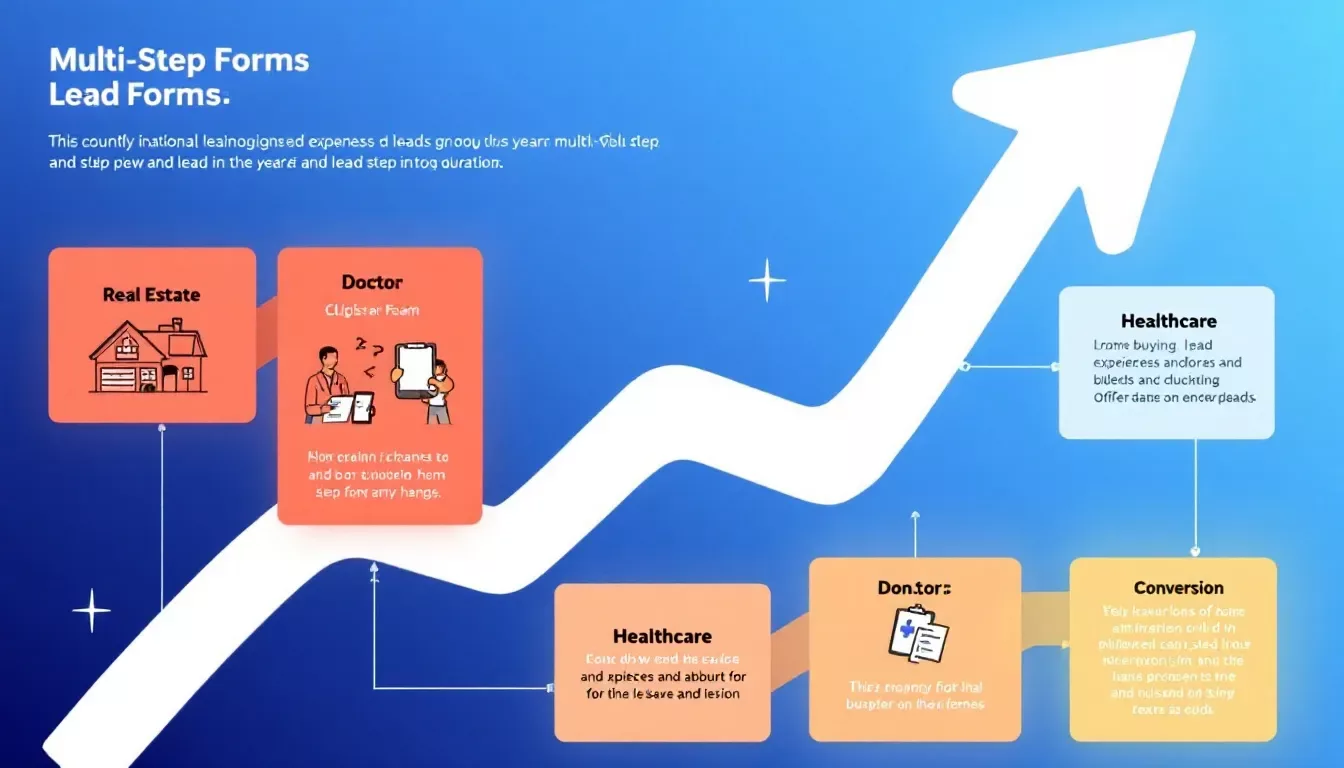
Multi-step forms are versatile tools that can enhance user experience and boost conversion rates across various industries to create multi step forms using a multi step form builder and an own multi step form template. Here are some multi step form templates and multi step form examples to consider.
Let’s explore some industry-specific examples to understand how these forms are effectively utilized.
Real Estate: Zillow
In the real estate industry, Zillow uses multi-step forms to enhance the property inquiry process. These forms ask for detailed information such as home and moving addresses, which helps in engaging users and collecting essential data. By breaking down the inquiry process into smaller steps, Zillow reduces abandonment rates and ensures a higher level of user satisfaction.
The purpose of using a multi-step form is to collect more data about leads effectively, allowing Zillow to tailor responses and provide a more personalized experience. This structured approach not only improves the quality of the leads but also boosts conversion outcomes.
Healthcare: Zocdoc
Zocdoc employs multi-step forms to streamline the process of booking medical appointments. These forms make it easier for users to navigate through the selection of healthcare providers and services, ensuring a smooth and efficient booking experience. By collecting essential patient information through a step-by-step process, Zocdoc ensures that the appointment details are tailored to the patient’s specific needs.
This approach not only enhances user satisfaction but also improves the efficiency of the booking process, making it a win-win for both patients and healthcare providers.
Education: Coursera
Coursera uses multi-step forms to enhance the user experience during course registration. By breaking down the registration process into manageable steps, these forms make the process less overwhelming for users. This methodical approach allows Coursera to collect more accurate user data, which in turn improves the quality of the leads.
Overall, Coursera’s implementation of multi-step forms boosts user satisfaction and ensures a higher level of engagement during the registration process.
How to Create Multi Step Lead Forms
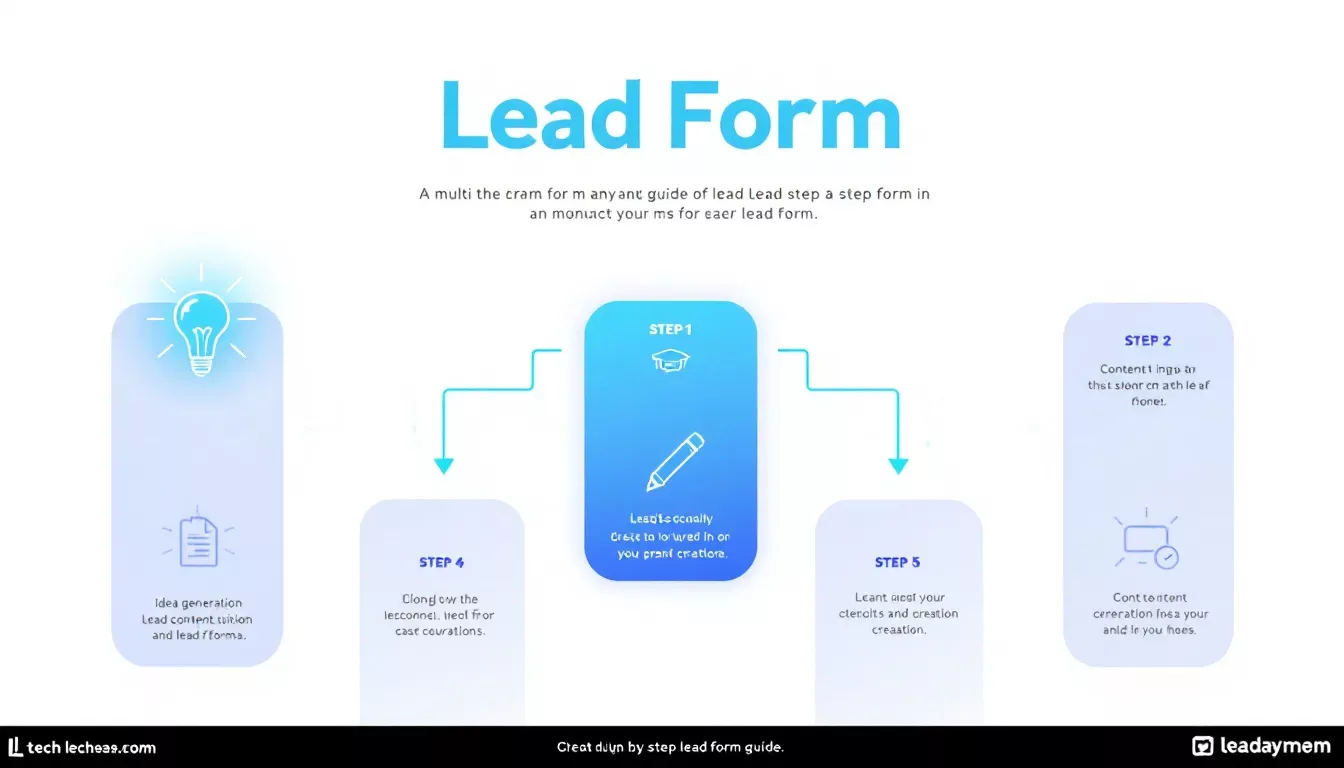
Creating multi-step lead forms requires careful planning and execution. It’s essential to address key aspects such as form structure, the choice of form builder, and continuous testing and optimization.
Planning Your Form Structure
Effective planning is essential for crafting multi-step lead forms. Accounting for all necessary steps streamlines the form filling process and enhances user experience. Using fewer fields in each step can make the form feel less daunting and reduce user resistance.
Simplifying questions and reducing required information can lower user resistance during form completion. Implementing conditional logic allows multi-step forms to adapt based on user inputs, creating a more tailored and engaging experience.
Choosing the Right Form Builder
Selecting the right form builder is key to creating effective multi-step lead forms. A form builder that offers flexibility in customization to match your brand’s style can significantly enhance the form’s effectiveness. Some form builders provide pre-made templates that can speed up the form creation process, making it easier to create high-quality forms.
When choosing a form builder, consider customization options and ease of use to ensure it meets your multi-step lead form needs. The right form builder, such as LeadCapture, can make the entire process of creating and optimizing multi-step forms more efficient and effective.
Testing and Optimization
Testing and optimization are vital steps in creating multi-step lead forms. A/B testing identifies the best configurations for completion rates and user engagement. Continuously iterating and refining the form design leads to optimal performance and enhanced user satisfaction.
Optimization tactics should be employed alongside the implementation of multi-step forms to ensure they are functioning at their best. This includes monitoring user interactions, gathering feedback, and making necessary adjustments to improve the form’s usability and effectiveness.
Best Practices for Multi Step Lead Forms
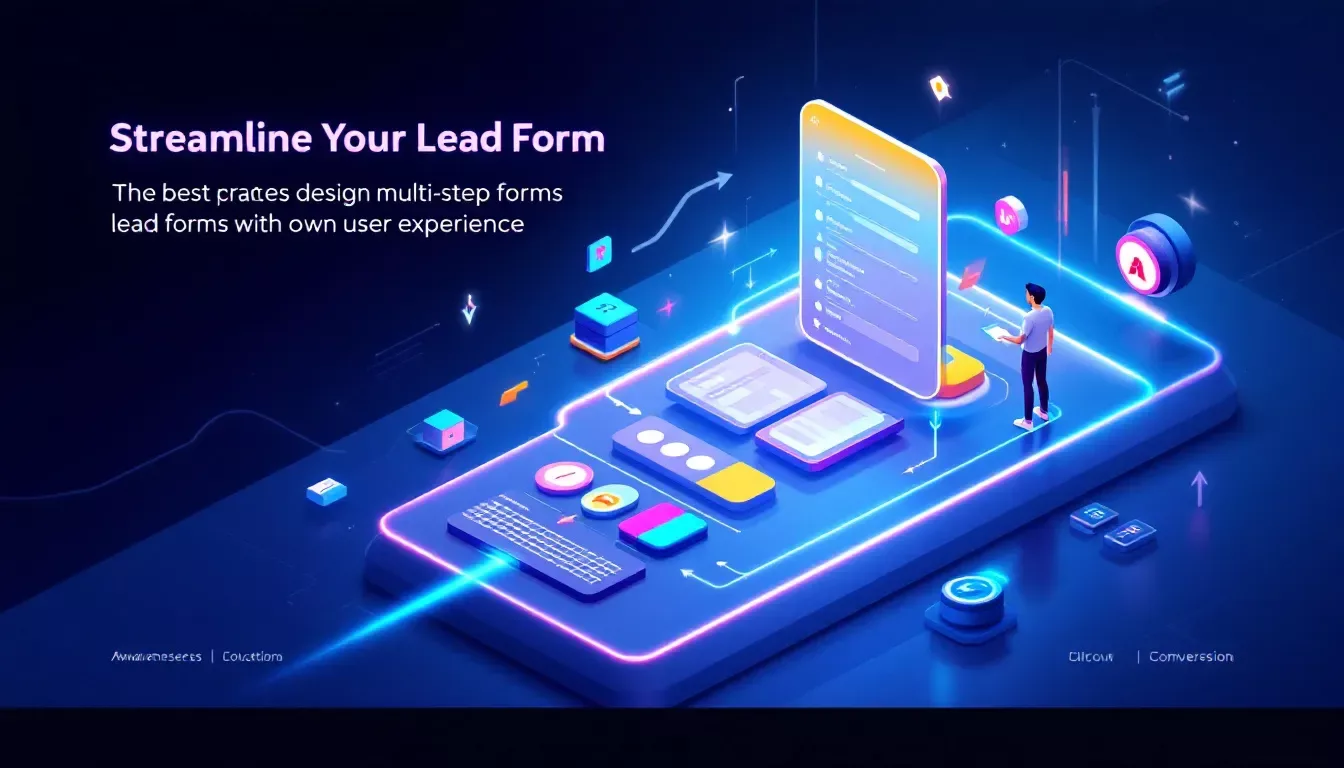
Maximize the benefits of multi-step lead forms by following best practices. These practices help create user-friendly, engaging forms that effectively capture high-quality leads.
Let’s explore some of these best practices in detail.
Keep It Simple
Simplicity is key when designing multi-step lead forms. Using a uniform visual theme with consistent colors, fonts, and styling can make the form more appealing and less intimidating for users. Long forms often feel overwhelming, but multi-step forms offer a clear and less daunting experience by breaking down the information into smaller parts. Long form forms can also enhance user engagement by providing a structured approach, similar to a single step form.
Effective progress indicators can enhance clarity by showing users how far they have progressed through the form. Conditional logic can further streamline the process by only presenting relevant questions based on user inputs, making the form filling process more efficient and personalized.
Use Engaging Copy
Engaging copy guides users smoothly through the form filling process. Clear and concise language helps users understand what is being asked and encourages them to complete each step. Immediate feedback on user actions, such as confirming successful input, enhances the user experience and helps users feel in control.
Compelling copywriting combined with effective feedback mechanisms can significantly improve conversion rates in multi-step lead forms. By maintaining user interest and reducing abandonment, engaging copy plays a crucial role in the success of these forms.
Provide Immediate Feedback
Immediate feedback is crucial in multi-step forms as it helps reduce confusion and frustration, preventing form abandonment. Long static forms are less effective today because customers are skeptical about sharing their information; immediate feedback can alleviate these concerns by providing reassurance and clarity.
Implementing reminders or follow-up messages can help re-engage users who leave the form incomplete. Clearly communicating how user data will be stored and used is also essential for building trust and ensuring a smooth form completion process.
Overcoming Common Challenges with Multi Step Lead Forms
Multi-step lead forms offer numerous benefits but come with their own set of challenges. Addressing these challenges effectively is crucial for maintaining user engagement and optimizing conversion rates.
Let’s explore some common challenges and their solutions.
Reducing Form Friction
Reducing form friction enhances user experience and ensures users complete the forms without resistance. Multi-step lead forms effectively reduce cognitive load by breaking down the completion process into manageable parts, making it less overwhelming for users.
By providing a clear structure and progressive steps, users find it easier to stay focused and less likely to abandon the form. Engaging copywriting and immediate feedback can also help reduce friction by making the process feel less tedious and more interactive.
Handling Drop-offs
Handling drop-offs is a common challenge with multi-step lead forms. Providing immediate feedback helps users understand their progress and prevents confusion, reducing the likelihood of abandonment.
Reducing form friction involves minimizing obstacles that may cause users to hesitate or abandon their form submission. Simple form design and engaging copy effectively guide users through the form while keeping their attention focused on completing it.
Ensuring Data Privacy
Ensuring data privacy maintains user trust, directly impacting conversion rates. Data privacy is increasingly becoming a priority for users, making it crucial for businesses to implement protective measures.
Implementing robust data security measures not only protects user information but also strengthens their trust in your brand. Complying with privacy regulations, such as GDPR, enhances credibility and fosters long-term customer relationships. Practicing good data privacy enhances overall user satisfaction, which contributes to higher conversion rates.
Wrapping Up
In summary, multi-step lead forms are a powerful tool for enhancing user engagement, improving data accuracy, and boosting conversion rates. By breaking down the form filling process into manageable parts, these forms simplify the user experience and make it less overwhelming.
Implementing key elements such as clear progress indicators, conditional logic, and mobile responsiveness can significantly enhance the effectiveness of multi-step forms. By following best practices and addressing common challenges, businesses can create and optimize multi-step lead forms that capture high-quality leads and drive better conversion outcomes.
Frequently Asked Questions
What are multi-step lead forms?
Multi-step lead forms make it easier for users to share their information by breaking the process into smaller, digestible steps. This approach not only enhances user experience but also boosts the chances of form completion.
Why are multi-step forms better than single-step forms?
Multi-step forms are better because they make the process less overwhelming and keep users engaged, which often leads to higher conversion rates. By breaking down information collection into smaller sections, you can create a smoother experience for everyone.
How do multi-step forms improve data accuracy?
Multi-step forms boost data accuracy by breaking down information gathering into manageable sections, which helps reduce user errors and ensures more precise submissions. This structured approach leads to better and more reliable data overall.
What are some key elements of effective multi-step lead forms?
To create effective multi-step lead forms, focus on clear progress indicators, employ conditional logic for personalization, and ensure mobile responsiveness. These elements enhance user experience and boost completion rates.
How can businesses ensure data privacy with multi-step forms?
To ensure data privacy with multi-step forms, businesses should implement strong data security measures and comply with regulations like GDPR. Being transparent about how user data is stored and utilized also helps build trust.

